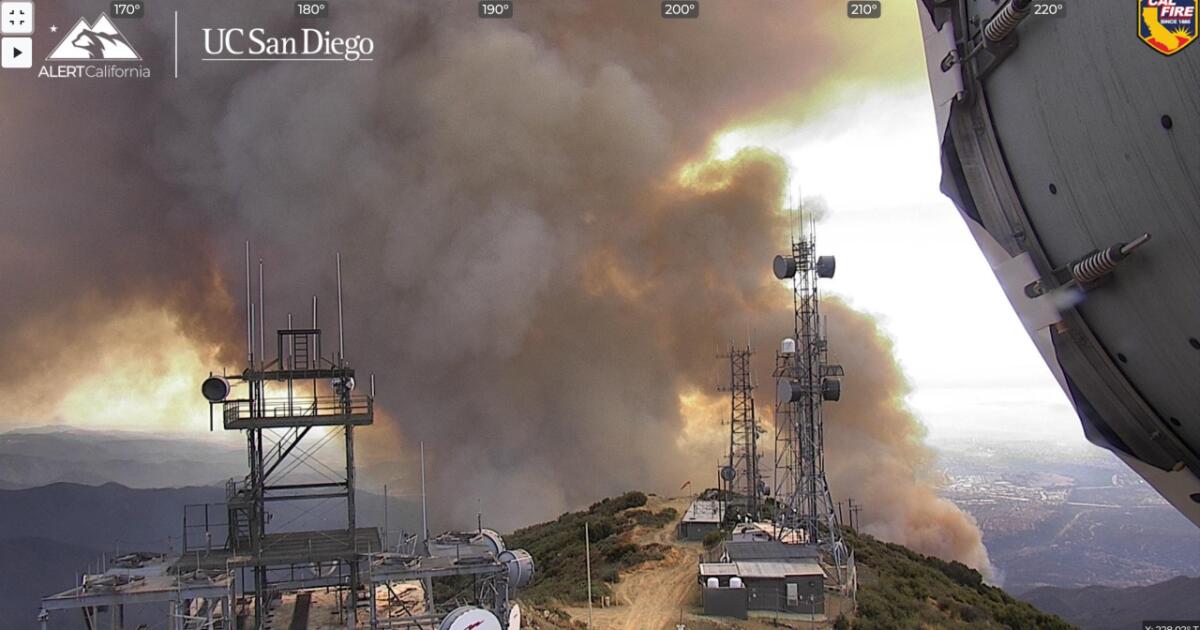A tropical depression in the Gulf of Mexico strengthened into Tropical Storm Debby on Saturday as it moved through the Gulf of Mexico toward Florida.
Forecasters at the National Hurricane Center said the storm now had maximum sustained winds of 40 mph. Debby was located about 100 miles west-southwest of Key West, Florida, and it was moving toward the northwest at 15 mph.
Wind and thunderstorms have spread over a broad region, including southern Florida, the Florida Keys and the Bahamas.
Debby is likely to bring drenching rain and coastal flooding to much of Florida’s Gulf Coast by Sunday night, and predictions show the system could come ashore as a strong tropical storm or hurricane Monday and cross over northern Florida into the Atlantic Ocean.
Forecasters warn it could also drop heavy rains over north Florida and the Atlantic coasts of Georgia, South Carolina and North Carolina early next week.
Debby is the fourth named storm of the 2024 Atlantic hurricane season after Tropical Storm Alberto, Hurricane Beryl and Tropical Storm Chris, all of which formed in June.
The National Hurricane Center in Miami forecast that the system will strengthen as it curves off the southwest Florida coast, where the water has been extremely warm with temperatures approaching 92 degrees Fahrenheit (33 Celsius) this week.
System could make landfall as strong tropical storm or hurricane
Predictions show Debby could come ashore as strong tropical storm or hurricane on Monday and cross over northern Florida into the Atlantic Ocean, where it’s likely to remain a tropical storm threatening Georgia and the Carolinas early next week.
Tropical storm warnings were posted for most of Florida’s West Coast and the Dry Tortugas, and a hurricane watch was issued for parts of the Big Bend and Florida Panhandle. A warning means storm conditions are expected within 36 hours, while a watch means they are possible within 48 hours.
Tropical storms and hurricanes can trigger river flooding and overwhelm drainage systems and canals. Forecasters warned of 5 to 10 inches (125 mm to 250 mm) of rain, which could create “locally considerable” flash and urban flooding. Forecasters also warned of moderate flooding for some rivers along Florida’s West Coast.
Some of the heaviest rains could actually come next week in a region along the Atlantic Coast from Jacksonville, Florida, to the north through coastal regions of Georgia, South Carolina and North Carolina. The storm is expected to slow down after making landfall.
“We could see a stall or a meandering motion around coastal portions of the southeastern United States,” National Hurricane Center Director Michael Brennan said in a Saturday briefing. “So that’s going to exacerbate not just the rainfall risk, but also the potential for storm surge and some strong winds.”
Flat Florida is prone to flooding even on sunny days, and the storm is predicted to bring a surge of 2 to 4 feet (0.6 to 1.2 meters) along most of the Gulf Coast, including Tampa Bay, with a higher tide of 3 to 5 feet (0.9 to 1.5 meters) farther north in the sparsely populated Big Bend region.
Forecasters warned of “a danger of life-threatening storm surge inundation” in a region that includes Hernando Beach, Crystal River, Steinhatchee and Cedar Key. Officials in Citrus and Levy counties ordered a mandatory evacuation of coastal areas, while those in Hernando, Manatee, Pasco and Taylor counties called for voluntary evacuations. Shelters opened in those and some other counties.
A tropical storm warning was posted for the southern end of the Florida Keys, and multiple wind gusts above 45 mph were recorded.
Preparations underway in Florida to guard against flooding
Florida Gov. Ron DeSantis has declared a state of emergency for 61 of the state’s 67 counties, with the Florida National Guard activating 3,000 guard members.
In Tampa alone, officials gave out more than 30,000 sandbags to barricade against flooding.
“We’ve got our stormwater drains cleared out. We’ve got our generators all checked and full. We’re doing everything that we need to be prepared to face a tropical storm,” Tampa Mayor Jane Castor said.
Christina Lothrop is the general manager at Blue Pelican Marina in Hernando Beach, a barrier island about 50 miles (80 kilometers) north of St. Petersburg. She said Saturday still seemed like a regular summer day, with the public ramp across the street jammed with people launching boats.
“Today it’s kind of normal, which is kind of weird,” Lothrop told The Associated Press by telephone.
Workers at her marina have been getting ready since Tuesday, however, securing boats stored on racks, stowing tool boxes and tying everything down.
“Right now what we’re doing is mostly tying up boats,” Lothrop said.
Before closing time Saturday, Lothrop planned to raise computers off the floor and sandbag and tape doors. Last year’s Hurricane Idalia pushed about a foot of water (30 centimeters) into the store.
Betti Silverman, whose home in Crystal River was under an evacuation order, said she doubted her family would leave. Silverman’s waterfront home flooded during Idalia just as they were moving in, ruining moving boxes and furniture stored in the garage. But she said the forecast for this storm is not as severe.
“We’ve been in Florida our whole lives — in South Florida — so hurricanes are not really a big, big thing,” Silverman said.
On Friday, crews pulled floating cranes away from a bridge construction project across Tampa Bay, lashing together 74 barges and 24 floating cranes and anchoring them until the storm passes, project engineer Marianne Brinson told the Tampa Bay Times. Crews also laid down cranes on land on their sides.
Pinellas County paused a $5 million beach renourishment project necessitated in part by erosion from past storms.
For some, the name Debby summons bad memories of a 2012 tropical storm of the same name that caused $250 million in losses and eight deaths, including seven in the Sunshine State. That storm dumped torrential rains up the West Coast into northern Florida, including an astronomical 29 inches (730 mm) south of Tallahassee.
More storms in the Pacific, but no threat to land
Meanwhile, far off Mexico in the Pacific Ocean, Hurricane Carlotta continued moving westward with maximum sustained winds of 90 mph (145 kph). The hurricane center said Carlotta should begin losing strength on Sunday and is likely to dissipate into a remnant of thunderstorms in three to four days.
Farther west Tropical Storm Daniel formed in the Pacific on Saturday, but it was 1,500 miles (2,400 km) from the southern tip of Baja California and was also expected to dissipate without striking land.


























































